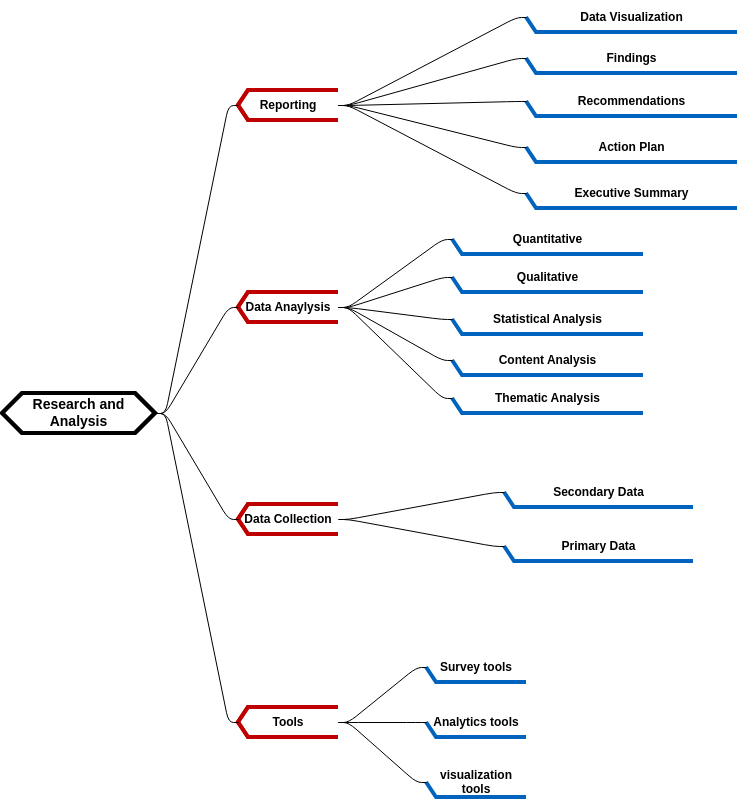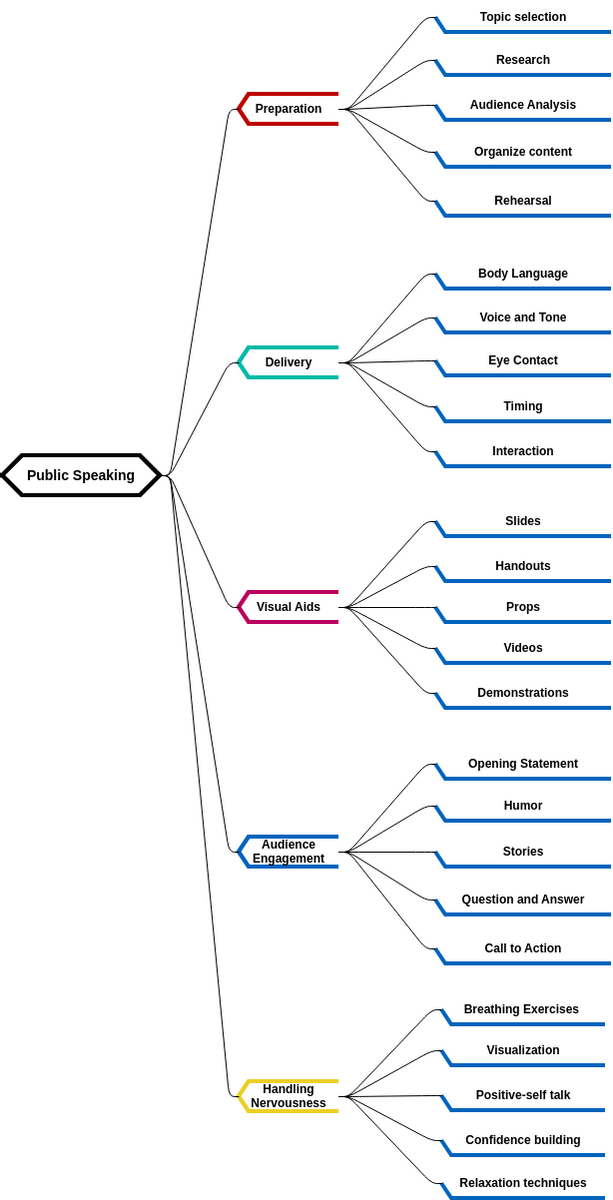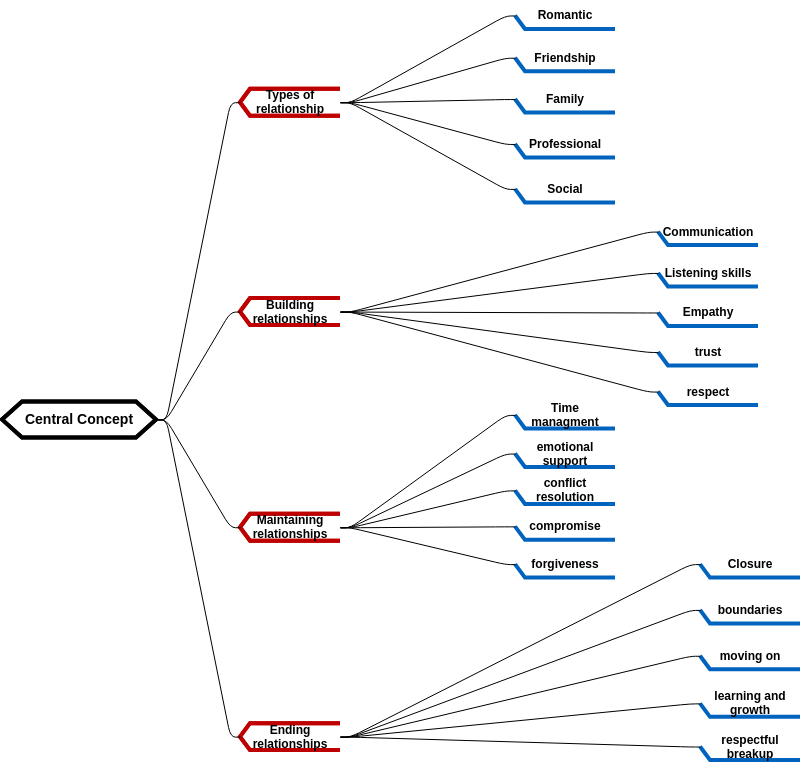Mindfulness practice mind map
This mind map provides a comprehensive guide to mindfulness practices that can help improve mental and physical wellbeing. The first section of the mind map is breathing exercises, which includes deep breathing techniques that can help reduce stress and anxiety. Deep breathing techniques, such as the 4-7-8 breath or diaphragmatic breathing, can promote feelings of calm and relaxation by focusing your attention on your breath.
The next section of the mind map is meditation, which can help improve mental clarity, reduce stress, and increase feelings of calm and relaxation. The loving-kindness meditation is a specific type of meditation that involves sending positive thoughts and feelings towards yourself and others. This can help improve feelings of connectedness and compassion.
The mindful movement section of the mind map includes Tai Chi, a gentle form of exercise that involves slow, flowing movements. Tai Chi can help improve balance, flexibility, and strength, as well as promote feelings of calm and relaxation. Mindful movement practices can also include yoga or other forms of exercise that promote mind-body awareness.
The mindful eating section of the mind map involves eating slowly and mindfully, paying attention to the taste, texture, and smell of your food. This can help you develop a healthier relationship with food and improve digestion. By focusing on the sensory experience of eating, you can also reduce feelings of stress or anxiety and promote feelings of relaxation.
Benefits of creating this mind map
Creating a mind map for mindfulness practices can provide several benefits. Firstly, it can help you explore and identify different mindfulness practices that resonate with you. By breaking down mindfulness practices into smaller components and organizing them in a visual way, you can gain a better understanding of how each practice fits into your overall mindfulness routine. This can help you identify which practices are most relevant and useful for you, and which ones you may want to explore further.
Secondly, creating a mind map for mindfulness practices can help you stay motivated and on track towards incorporating these practices into your daily routine. By breaking down mindfulness practices into smaller components, you can focus on one practice at a time and avoid feeling overwhelmed. Additionally, by using the mind map to track your progress, you can ensure that you are staying on track towards your mindfulness goals and not forgetting anything important.
Overall, the mindfulness practice mind map provides a practical and effective tool for anyone seeking to improve their mental and physical wellbeing through mindfulness practices. By incorporating these practices into your daily routine, you can reduce feelings of stress and anxiety, increase feelings of calm and relaxation, and improve your overall quality of life. By breaking down mindfulness practices into smaller components and organizing them in a visual way, you can stay motivated and on track towards achieving your mindfulness goals, leading to a more fulfilling and enjoyable life experience.















































